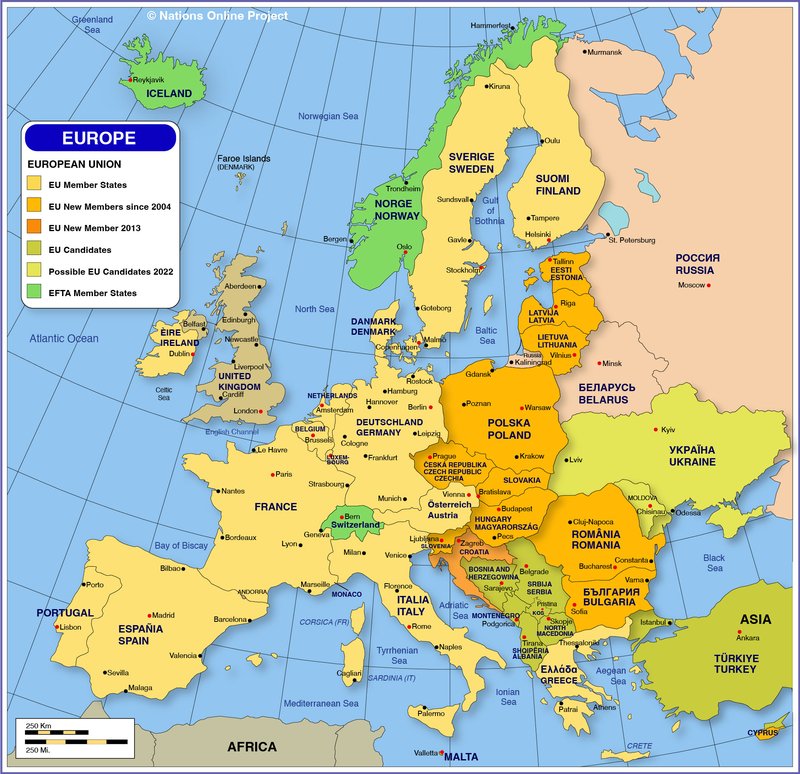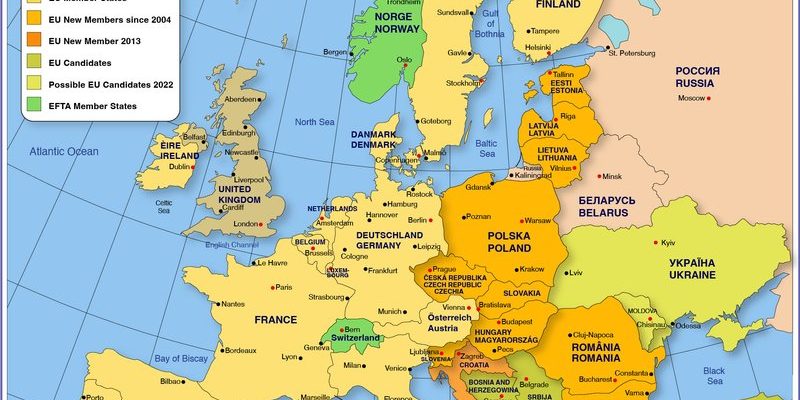
The European Eel is a fascinating creature that has captured the curiosity of scientists and nature lovers alike. These serpentine fish are not just your average swimmers; they have an incredible life journey that takes them from the depths of the oceans to the rivers and lakes of Europe. Imagine a creature that can navigate thousands of kilometers just to breed! It’s a bit like a long-distance athlete, but in the water.
One of the most intriguing aspects of the European Eel is their mysterious life cycle. They are born in the Sargasso Sea, a part of the North Atlantic Ocean, and after a long and perilous journey, they make their way to freshwater habitats in Europe. This incredible migration isn’t just a fun fact; it plays a crucial role in their survival and the ecosystems they inhabit.
In this article, we’ll explore the European Eel’s biology, habitat, diet, and conservation status, diving deep into what makes this species so unique. So, grab a cup of coffee, and let’s wade into the world of these slippery, enigmatic eels!
Physical Characteristics
The physical appearance of the European Eel is as unique as its life cycle. These eels can grow quite long, reaching lengths of up to 5 feet! However, the average size you might encounter is around 2 to 4 feet. Their bodies are elongated, which allows them to glide effortlessly through water. What’s more, they sport a sleek, shiny skin that changes color from yellowish-brown to silver as they approach maturity, signaling their journey back to the sea.
Another interesting feature is their eyes. When eels are ready to spawn, their eyes become larger and more pronounced. This adaptation helps them navigate better in their oceanic habitats, especially during their long migrations. It’s as if nature gave them a set of high-tech goggles to help them find their way!
European Eels also have a unique set of fins. They have a dorsal fin that runs along their entire back and connects to their tail. This fin helps them steer and maintain balance as they swim. Their pectoral fins are small and not very noticeable, but they do assist in subtle movements as they navigate rocky riverbeds or deep swamps.
Habitat
The European Eel has a broad range of habitats, making it a versatile survivor in various environments. They’re primarily found in rivers, lakes, and estuaries, but they can also be spotted in brackish waters. These eels have a knack for adapting to both freshwater and saltwater, which helps them thrive as they migrate between the two.
During their juvenile stage, known as glass eels, they tend to inhabit shallow coastal areas and rivers where they can find ample food and shelter. Once they mature into yellow eels, they often prefer deeper waters. These habitats provide them with plenty of hiding spots among rocks and underwater vegetation, which are crucial for their survival against predators.
Interestingly, the European Eel is known to prefer habitats with a slow current. This preference makes them less exposed to strong water flow, allowing them to conserve energy as they hunt for food. So, if you’re on a nature walk near a calm river, don’t be surprised if you spot one of these fascinating creatures lurking just beneath the surface!
Diet
When it comes to food, the European Eel is an opportunistic feeder. This means they’re not picky eaters and will consume whatever is available. Their diet typically consists of a variety of organisms, including crustaceans, small fish, and even insects. When they’re younger, they often feast on plankton and tiny invertebrates, which provide the nutrients they need to grow strong and healthy.
As European Eels mature, their diet shifts a bit. Adults tend to hunt larger prey, including smaller fish and other aquatic animals. It’s fascinating to note that they have a unique hunting method—using their keen sense of smell and sight to detect food from a distance. This efficient technique allows them to be stealthy predators in their watery homes.
One of the most intriguing aspects of their feeding habits is their ability to hunt at night. European Eels are mainly nocturnal, which means they prefer to hunt during the dark hours. This behavior not only helps them avoid daytime predators but also allows them to take advantage of the lower activity levels of other aquatic creatures during the night.
Life Cycle
The life cycle of the European Eel is nothing short of remarkable. It all begins in the Sargasso Sea, where adult eels migrate to spawn. After laying thousands of eggs, the adult eels die. These eggs hatch into tiny larvae called leptocephali, which drift along ocean currents for several months, slowly making their way toward Europe.
As they approach the European coast, they develop into glass eels, which are transparent and spend their time in shallow waters. This stage can last several years, during which they’ll grow into yellow eels. It’s during this time that they’ll migrate into rivers and lakes, where they can hide and eat to their heart’s content.
After several years of growth—sometimes up to 20 years—the eels reach maturity and begin their journey back to the Sargasso Sea to spawn. If you think about it, it’s almost like an epic road trip! They navigate back to where it all began, which is a journey that can span thousands of miles. This incredible life cycle is truly one of nature’s wonders.
Conservation Status
Sadly, the European Eel is currently classified as endangered. Overfishing, habitat loss, and barriers like dams are significant threats to their populations. The number of eels migrating back to the Sargasso Sea has drastically decreased over the past few decades, leading to growing concerns among conservationists. It’s heartbreaking to think about a creature with such an extraordinary life cycle facing extinction.
Efforts are being made to help protect these remarkable eels. Many countries are implementing regulations to reduce fishing and restore natural habitats. Additionally, organizations are studying their migration patterns and habitats to improve conservation strategies. It’s a long road ahead, but every small step counts!
It’s essential for us to raise awareness about the plight of the European Eel. By understanding their life cycle and the threats they face, we can be advocates for their protection. Simple actions, like supporting sustainable fishing practices or educating others about these incredible creatures, can go a long way in helping ensure their survival.
Interesting Facts
The European Eel is full of surprises! Did you know that they can live for up to 85 years? That’s quite a long time for a fish! They are also known for their ability to travel on land for short distances. When their home waterways dry up, they can wriggle across land to find a new habitat. Talk about adaptability!
Another fun fact is that these eels have been a part of human culture for centuries. Ancient Greeks and Romans valued them as a delicacy, and even today, they are a sought-after dish in various cuisines. This has contributed to their overfishing, showcasing the tangled relationship between humans and this incredible species.
Finally, European Eels have a fascinating survival technique: they can produce a slimy mucous layer that helps them glide through water and evade predators. It’s a clever way to stay safe and avoid becoming dinner for someone else!
FAQ
What is the European Eel’s life span?
The European Eel can live for a surprisingly long time, with some individuals even reaching up to 85 years. This lengthy life span is part of what makes their life cycle so intriguing—their journey from the Sargasso Sea to rivers and back takes decades!
Are European Eels dangerous to humans?
No, European Eels are generally not dangerous to humans. They are shy creatures that prefer to avoid confrontation. Their slimy bodies and nocturnal habits make them elusive, so encounters with humans are rare. However, they do have sharp teeth, which they use to catch their prey.
Why are European Eels endangered?
European Eels are endangered due to overfishing, habitat loss, and barriers like dams that disrupt their migration routes. All these pressures have had a severe impact on their populations, leading to a significant decline over the past few decades.
How do European Eels migrate?
European Eels migrate thousands of kilometers from their freshwater habitats to the Sargasso Sea to spawn. They navigate using environmental cues and their keen sense of smell. This incredible journey can take several months and is one of nature’s most remarkable feats.
What do European Eels eat?
European Eels have a varied diet that includes crustaceans, insects, and smaller fish. They are opportunistic feeders, which means they’ll eat whatever is available, adapting to their surroundings to find food efficiently.
How do European Eels reproduce?
Reproduction occurs in the Sargasso Sea, where adult eels gather to spawn. After laying their eggs, the adult eels die. The eggs hatch into larvae that drift on ocean currents for several months before gradually making their way to Europe.
Can European Eels live in fresh and saltwater?
Yes, European Eels are unique in that they can thrive in both freshwater and saltwater. They spend their early life stages in coastal waters before migrating to freshwater habitats, showcasing their remarkable adaptability.
What threats besides overfishing do European Eels face?
In addition to overfishing, European Eels face threats like habitat destruction due to damming and pollution. These environmental changes can hinder their ability to thrive and reproduce, further contributing to their decline in numbers.
Are European Eels easy to find?
Seeing European Eels in the wild can be challenging. They are mostly nocturnal and prefer hiding in rocky or dense vegetation. However, they can occasionally be spotted in rivers and lakes, especially during their migration season.
How can I help protect the European Eel?
You can help protect European Eels by supporting sustainable fishing practices, advocating for habitat restoration, and raising awareness about their conservation status. Every small effort counts in safeguarding this remarkable species for future generations.

